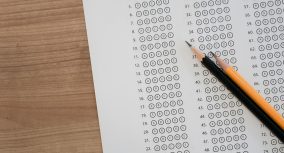The conclusion is the last paragraph in your paper that draws the ideas and reasoning together. However, its purpose does not end there. A definite essay conclusion accomplishes several goals:
- It provides a summary of the arguments;
- It addresses other important questions regarding the topic;
- It makes the reader think about the essay;
- It speculates what will happen in the future.
Therefore, a conclusion usually consists of:
- A restated thesis;
- A brief summary of subpoints;
- A sentence that produces the final impression.
Our experts prepared this guide, where you will find great tips on how to conclude your essay. If you incorporate them into your work, you will be able to write an outstanding essay ending.
🏗️ 101 Guide on Writing a Conclusion
Writing a concluding paragraph is, in a way, similar to writing an introduction. An introduction tells the readers what you are about to say. Meanwhile, a conclusion retells what you said in the essay.
Nevertheless, there are a lot of differences, as well. The conclusion is not about introducing new ideas but restating them. The structure below will help you if you are wondering how to write an excellent conclusion for the essay.
Keep in mind:
When writing a concluding paragraph, you should go from specific information to a general one. Thus, you’ll write it, mirroring the introduction to the paper, which starts with the overall context and ends with a thesis.
🚧 Connect to the Body
You should adequately introduce a conclusion and connect it to the body paragraphs. For that, you can either come up with a transition word or a transition statement.
Make sure to search for something more creative than “to sum up” or “finally.” There are hundreds of ways to conclude an essay. For that, you can search for transition words that look fresh and not overused.
A list of original transitions:
- All things considered
- As a result
- As I stated in the beginning
- Consequently
- Hence
- Subsequently
- Thereby
- This leads back to
- Ultimately
- Without a doubt
⛏️ Restate the Thesis
The next step is to restate the thesis from your introduction. However, you shouldn’t repeat it word to word. Try to find a new effective way to express the same idea and develop it further.
Example:
The presented evidence has demonstrated that the controversy on the potential benefits and drawbacks of a strict dress-code policy is yet to be resolved.
Also, the example shows how to start a conclusion. The author makes a transition from the body paragraph by reminding what controversy the essay tried to address.
🧱 Summarize
Instead of repeating your essay point by point, you should give a summary and synthesize the arguments. The conclusory paragraph’s goal is to wrap up the essay and answer a “so what?”. Combining the ideas into a coherent paragraph will do the trick. To help yourself out with this task, try using a main idea generator and use the results as an inspiration for your own summary.
You should aim to show that there is a link between all the points you have made throughout the essay. Let your reader know that you have connected the dots.
Example:
However, one must admit that such outfits are not comfortable, and the school uniform policy can damage students’ self-perception. Although teenagers who wear uniforms tend to get used to the and improve grades, sometimes they lack freedom of expression.
Here, the author summarizes all the points by demonstrating the problems of wearing a school uniform. It prepares the reader for the final part of the conclusion—a conclusion statement.
👷 Conclude with a Statement
It is the last part of the essay, and one might claim that it’s the most crucial one. It is your last chance to convince your readers. Besides, an outstanding concluding statement creates a sense of completeness.
You can do it in three ways:
- Connect the statement to the hook. It will create a definite closure in the entire essay as the end will be linked to the beginning. Logical reasoning is exceptionally significant. By coming up with a proper conclusion sentence, you can demonstrate it.
- Make it short and straightforward. You said everything you wanted in the body, and now it’s the time to create a final effect. Uncomplicated and short sentences can help you produce it.
- Create a compound statement or parallel in structure. Such sentences have a sense of balance and look beautiful on the page.
Example:
Therefore, school administrations should look for alternative ways to address issues of discipline and inequality on their grounds rather than relying solely on superficial changes, which stifle students’ individuality.
⛔ What to Avoid in a Conclusion
Here are a few tips on ways to conclude an essay by making it more appealing to the reader:
- Do not introduce new ideas. The concluding paragraph should be concise and straightforward. You already had enough time to explain your position and provide evidence for the readers to understand it.
- Do not try to fit everything in your conclusion. If you think the point is essential, then you should include it. Otherwise, cut it off.
- Do not repeat your thesis statement. It is more than paraphrasing or summarizing it—develop it according to the body.
- Do not use too many words. You have to remember about space, as your conclusion should be around 10% of the essay.
- Do not provide your personal opinion out of the blue. If it’s not based on your argumentation and evidence, keep it to yourself.
💯 Conclusion Examples
If you are still wondering: “How do you conclude an essay?” this article can help you learn some essential tips. The sample essay’s conclusion is summarizing and synthesizing the principal points of the piece. It restates the thesis statement and emphasizes the general significance of the topic. You can also try and use a sentence summarizer on your own text to check out a wider variety of examples.
Example:
The evidence presented in this paper has shown that the controversy on whether a strict dress-code policy is beneficial for schools is yet to be resolved. In the meantime, one must admit that such outfits are uncomfortable, and the school uniform policy indeed damages students’ self-perception. Even though teenagers who wear uniforms get used to the working environment and improve grades, they lack freedom of individual expression. Therefore, school authorities should consider seeking other ways to deal with problems of discipline and inequality on their grounds, rather than implementing only cosmetic changes, which harms students’ originality.
Thank you for reading this article, and don’t hesitate to share it with your peers. If you want to improve your essay-writing skills, look at the materials provided on our website. We have plenty of tips on how to write better essays!
References
- Ending the Essay—Conclusions: Pat Bellanca, for the Writing Center at Harvard University
- The Conclusion of the Essay: University of Wollongong
- Conclusions: The Writing Center, University of North Carolina at Chapel Hill
- Transitional Words and Phrases: The Writing Center, University of Wisconsin-Wadison
- Essay Conclusion: OWLL, Massey University, University of New Zealand

![How to Write about a Topic You Lack Interest in [2026]](https://custom-writing.org/blog/wp-content/uploads/2021/01/Frustrated-exhausted-young-woman-blogger-284x153.jpg)




![How to Stop Corruption Essay: Guide & Topics [+4 Samples]](https://custom-writing.org/blog/wp-content/uploads/2020/12/close-up-two-hands-while-paying-money-284x153.jpeg)


![Why I Want to be a Pharmacist Essay Topics & How to Write [2026]](https://custom-writing.org/blog/wp-content/uploads/2020/12/cut-out-medicament-drug-doctor-medical-1-284x153.jpg)

